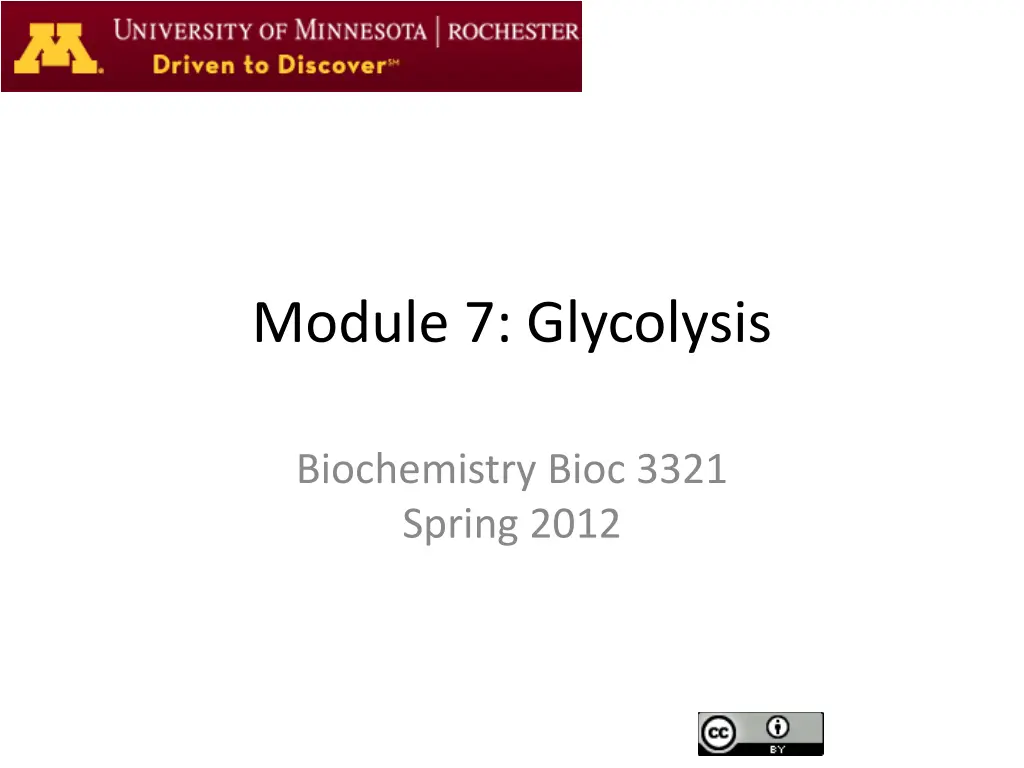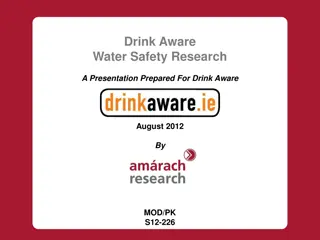
Biochemistry Insights: Glycolysis Mechanisms and Organic Chemistry Review
Discover the intricate mechanisms of glycolysis, including carbonyl isomerization and nucleophilic substitutions, in this informative biochemistry overview. Explore the formation of hemiacetals and acetals, essential to understanding cycled monosaccharides. Uncover the role of acid and base catalysis in biochemical reactions. Strengthen your knowledge with a review of organic chemistry concepts related to enzymatic reactions. Dive into the complexities of biochemistry with detailed explanations and visual aids.
Download Presentation

Please find below an Image/Link to download the presentation.
The content on the website is provided AS IS for your information and personal use only. It may not be sold, licensed, or shared on other websites without obtaining consent from the author. If you encounter any issues during the download, it is possible that the publisher has removed the file from their server.
You are allowed to download the files provided on this website for personal or commercial use, subject to the condition that they are used lawfully. All files are the property of their respective owners.
The content on the website is provided AS IS for your information and personal use only. It may not be sold, licensed, or shared on other websites without obtaining consent from the author.
E N D
Presentation Transcript
Module 7: Glycolysis Biochemistry Bioc 3321 Spring 2012
Outline 1. Glycolysis: From glucose to pyruvate (Sec. 14.1) 1. Preparatory phase 2. Pay-off phase 3. What to remember, what to look for 1. Activities 2. From polysaccharides to glucose (Sec. 14.2) 3. The fates of pyruvate 1. Fermentation under aerobic conditions (Sec. 14.3) 2. Fermentation under anaerobic conditions (Sec. 14.3) 3. The citric acid cycle (Sec. 16.1, 16.2) Spring 2012 Bioc 3321: Biochemistry 2
Organic chemistry review How much organic should you know? Useful resource http://chemwiki.ucdavis.edu/Organic_Chemistry/Organic_Chemistry_With_a_Biological_Emphasis/Appendix_I%3a_Index_of_enzymatic_reactions_by_pathway/Glycolysis%2c_Gluconeogenesis%2c_Fermentation You should be able to describe the following mechanisms: Carbonyl isomerization through enol formation link (the same mechanism as the steps G-6P <->F-6P and ismoerization GAP <-> DAP Keto-enol tautomerization link Formation of enamines and imine (Schiff base) link Imine-enamine tautomerization link Hydrolysis of anhydrides link (this is the same mechanism that kinases use to phosphorylate alcohols) Aldol condensation link (the reverse of aldolase step) Hydrolysis of esters and amides Amides link Esters Michael additions and Beta-eliminations link Formation of hemiacetals and acetals Hemiacetals link Acetals link Elimination of an alcohol link Decarboxylations link (Pyruvate will decarboxylate to enter the Krebbs cycle) Spring 2012 Bioc 3321: Biochemistry 3
Nucleophilic substitutions Acid catalysis What would base catalysis look like? Spring 2012 Bioc 3321: Biochemistry 4
Formation of hemiacetals The formation of cycled monosaccharides has this mechanism Identify the nucleophile and the electrophile What is the role of HA and B? Notice that this mechanism shows acid and base catalysis. While this is how it happens in enzymes, in solution it will either be acid or base catalysis Spring 2012 Bioc 3321: Biochemistry 5
Formation of acetals (O-glycosidic bond) The O-glycosidic bond that we studied in carbohydrates is an acetal Spring 2012 Bioc 3321: Biochemistry 6
Formation of N-glycosidic bonds The N-glycosidic bond found in nucleotides is similar to an acetal with the difference that the second nucleophile attacking is a nitrogen instead of another oxygen Spring 2012 Bioc 3321: Biochemistry 7
Formation of imines (Schiff base) Spring 2012 Bioc 3321: Biochemistry 8
Keto-enol tautomerization Remember that tautomerization is not like a resonant form. This is a real equilibrium. Usually the keto form is more stable, however: Spring 2012 Bioc 3321: Biochemistry 9
Keto-Aldehyde isomerizations Spring 2012 Bioc 3321: Biochemistry 10
Keto-Aldehyde isomerizations Keto-alehyde isomerizations go through the enol (or enolate) intermediate triose phosphate isomerase phosphoglucose isomerase Spring 2012 Bioc 3321: Biochemistry 11
Imine-Enamine tautomerization Look at this tautomerization as an analogous to the keto-enol The last step of pyruvate kinase implies an enamine-imine tautomerization Spring 2012 Bioc 3321: Biochemistry 12
Phosphorylations: ATP + S ADP + S-P Phosphorylations are the reactions through which ATP can activate substrates with alcohol groups. This is a SN2 mechanism. What s the leaving group? What is the role of the base B? Often ATP is coordinated to Mg2+ Spring 2012 Bioc 3321: Biochemistry 13
Spring 2012 Bioc 3321: Biochemistry 14
Formation of ATP from ADP Phosphoglycerate kinase Spring 2012 Bioc 3321: Biochemistry 15
Aldol condensation AldOl The aldol condensation goes through an enolate intermediate Spring 2012 Bioc 3321: Biochemistry 16
The retroaldol reaction Catalyzed by aldolase Spring 2012 Bioc 3321: Biochemistry 17
Reductions from carbonyl to alcohol The carbonyl is attacked by a hydride H(-) Spring 2012 Bioc 3321: Biochemistry 18
Oxidations from alcohol to carbonyl In an oxidation of alcohol, NAD+ will remove a hydride (H(-)) from the substrate A similar path will follow an oxidation from an aldehyde to carboxyl Can you oxidize a ketone to a carboxyl? Spring 2012 Bioc 3321: Biochemistry 19
Decarboxylation Do not think that CO2 is the leaving group Spring 2012 Bioc 3321: Biochemistry 20
Formation of thioesters: thioesterification From a carboxylic acid: From an ester: Spring 2012 Bioc 3321: Biochemistry 21
Hydrolysis of thioesters Spring 2012 Bioc 3321: Biochemistry 22
Michael additions In the Krebbs cycle fumarate converts into malate Spring 2012 Bioc 3321: Biochemistry 23
Beta eliminations (The reverse of Michael additions) Spring 2012 Bioc 3321: Biochemistry 24
Remembering substrates in the Glycolysis pathway How much nomenclature should you know? Draw on huddle boards all the substrates of glycolysis. For each of them connect each part of its name with the structure it corresponds. (e.g. glyceraldehyde phosphate: identify glycerol, aldehyde and phosphate) Spring 2012 Bioc 3321: Biochemistry 25
Animations You can review some of the mechanisms of glycolysis on this site http://bcs.whfreeman.com/lehninger5e/ Spring 2012 Bioc 3321: Biochemistry 26






















